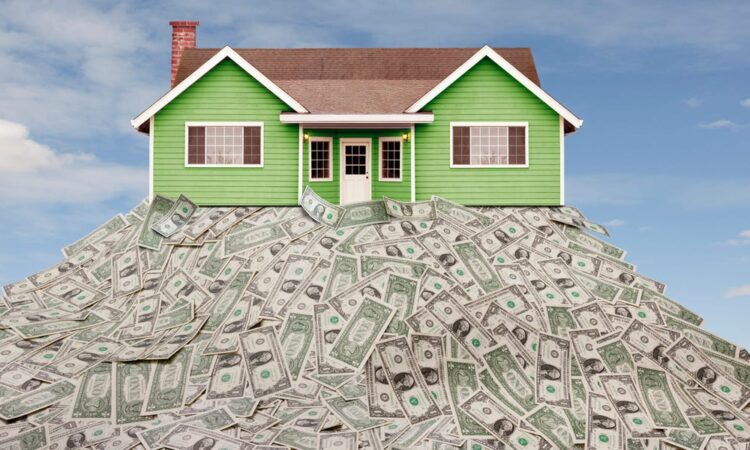
- Agent Advice found 10 cities that yield a high return with home values below the national median.
- Co-founder Chris Heller emphasized that going for cheaper properties could have higher repair costs.
- Investors should consider whether they prefer a quicker return or a larger one later.
The real-estate market took a hard hit after interest rates rose at the fastest pace since the 1980s. Between 2021 and 2022, mortgage rates more than doubled, going from just below 3% to almost 7%.
Expensive debt kept buyers on the sidelines while would-be sellers held tight to their low rates.
“The national average home value, which rose 4.4% in the 12 months prior to February, has been expected to flatten out over the 12 proceeding months,” wrote Chris Heller, co-founder of Agent Advice in a note. “Of course we are currently in that time period, and thus for the next half year or so, we would not expect drastic appreciation or depreciation. A shortage of new listings is helping to steady property prices as elevated interest rates present affordability challenges for buyers.”
Home sales, which include single-family units and townhomes, condominiums, and co-ops, declined to the lowest in three months in April of 2023, according to Trading Economics.
The upside is that higher rates tugged property prices down. The median sales price of houses sold in the US dropped from $479,500 in the last quarter of 2022 to $436,800 in 2023, according to Census Bureau data.
Some investors are seeing the slowed market as an opportunity.
Victor Whitmore, a real-estate investor from Tulsa, Oklahoma who owns three multi-family complexes that house 471 rental units, says rates are irrelevant in the face of your returns. Instead, the focus should be on cash flow. Since rental rates are going up just as fast as interest rates, investors can raise rents to compensate.
Many real estate investors also start out by going for lower-value homes.
In a previous interview with Insider, Whitmore recommended starting small, which in today’s market could look like a single-family house for $50,000. He purchased his first two properties in 2003 for $17,000 each.
Travis Hanson from Lubbock, Texas now owns 109 properties. His first two homes were purchased for $34,000 and $40,000 shortly after the 2008 crash. Hanson’s advice is to look for properties that are well below the national median price to cushion downturns.
Thomas Harr, a 28-year-old investor from Columbus, Ohio who owns 42 cash-flowing properties, purchased a three-bedroom single-family house for $53,000 in Columbus, Ohio when he got started. Harr noted that the after-repair value of a good investment property should be affordable relative to the area to attract wider interest. For Columbus, that means having a price point below $200,000.
Lower price points fall into the first-time home buyer’s range, which means there’s always demand for them regardless of how the market ebbs and flows. Many young families also look to get into their first home by renting.
Cities with the best returns on investment
A recent study by Agent Advice analyzed home values and typical rent prices across US cities. It revealed that properties with the best return on investment aren’t luxury homes or in hot markets. It’s quite the opposite. Cities where the median home price is well below the national average of $319,325 yield a quicker ROI.
The best bang for your buck is to be made on properties at the very low end of the price spectrum, wrote Heller. He added that the top ten cities for the best ROI have a typical housing value far below the national average. And as many as seven of the ten have a typical housing value less than 50% of the national average.
The second factor Heller pointed to is that it’s not just about the low values, but also about how quickly an investor can be paid back for the mortgage, which could sometimes be in less than 2 years. He added that while the typical asking rent in all of the cities is below the national average, it is generally not significantly below it. This is contrasted to the typical home values for those cities, which are significantly below average.
Below is a table that lists the payback period in months on a 20% down payment. The study by Agent Advice used data from the Zillow Housing Value Index (ZHVI), which shows the typical housing value in a given geography. It also used the Zillow Observed Rent Index (ZORI), which measures the asking rent prices to establish places with the highest rental values, compared proportionally to the cost of a property. It is ranked in ascending order of the payback period.
Heller emphasized that one caveat to keep in mind when going for cheaper properties is that it may come with extra work and costs in the form of upgrades and repairs. This has the potential to lengthen the payback period.
On the other end of the spectrum, the high-priced property could yield a larger ROI but the payback period will be longer due to the higher amount initially invested. Investors must consider whether they want their returns sooner or larger returns later, Heller said.
Right now, areas where home values are well above the national average, have seen a drastic increase in their payback periods. Below is a table that lists the cities, beginning with the least desirable ROI.






